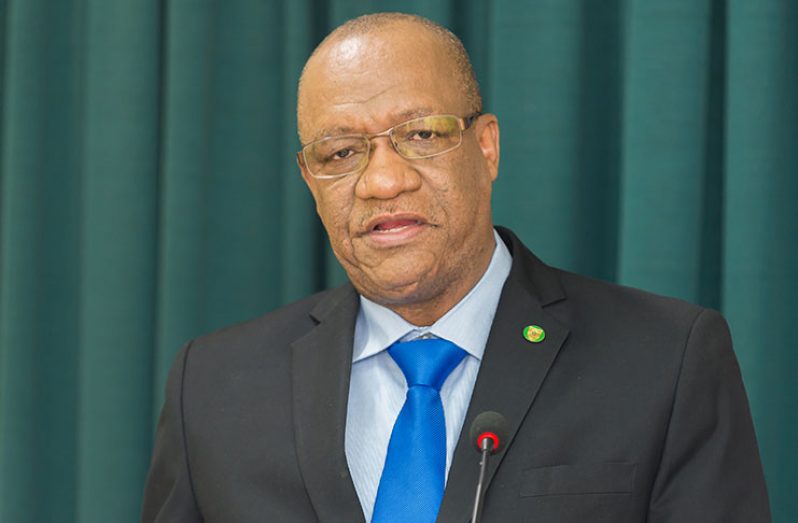– Min. Harmon assures South Rupununi
IN an effort to settle the burning issue of Amerindian land titling (ALT)once and for all, President David Granger will be meeting shortly with officials of the Guyana Lands and Survey Commission (GLSC) and Minister of Indigenous People’s Affairs, Sidney Allicock, so that together they can brainstorm the matter and come up with a win-win solution.
This was told residents of Sand Creek, in the South Rupununi on Sunday by Minister of State Joseph Harmon.
Minister Harmon related that for the entire three days ministers of the government were on an outreach in Region Nine (Upper Takutu-Upper Essequibo), the matter of Amerindian Land Titling seemed to have been uppermost on the minds of the various Toshaos and villagers they met, since it was raised at almost every turn.
As Minister Harmon hastened to assure them all, the government has the affairs of the First Peoples at heart, and the matter will be dealt with once and for all.
“His Excellency, the President, has made a decision that within a month, he will meet with the Lands and Survey Commission and the Minister of Indigenous People’s Affairs to sit down with them and ensure that all of the hurdles that are blocking the issuing of titles for land to our Indigenous Peoples are cleared,” he said.
In Sand Creek, the matter was of major concern to Toshao Maxie Pugsley and residents, since a request for land extension had been made. Toshao Pugsley said that the lands on which the village is currently located are low, and farmers and residents are often affected during the rainy season. He said that an extension is needed for a transfer of farms and other assets in the village, especially during the rainy season. One resident also related that some of the villagers are currently squatting, and would really like for the matter to be addressed at the earliest opportunity.
As Minister Harmon assured them all, he is thoroughly against squatting, since it is against the law, and would advise those doing so to desist immediately.
He however advisesd that the issue of extensions is another matter altogether, as it has to be dealt with specifically by the GLSC, since many of the applications have proven to be mired in conflict, since many of the villages requesting extensions are doing so in villages other than their own.
Warning that those applications without conflict will be addressed expeditiously by the Commission, while others will have to go through the process of conflict resolution, Minister Harmon said, “Where the conflicts exist, then we will have to have some form of a conflict resolution, which will actually entail having to bring the villages together and have a third-party mediate that situation.”
He said that the GLSC has internal mechanisms in place by way of using consultants and advisers who are land specialists to deal with these matters. Matters of extension will also be dealt with by President Granger himself,when he meets with the two entities.
Amerindians comprise 9.1 per cent of Guyana’s population, and currently own approximately 13.9 per cent of the land, an increase by some 6 per cent to what obtained in the early 90s.
The Government of Guyana has set the policy objective of addressing all Land Titling issues by 2015 for Amerindian villages where two-thirds of the adult population request this to be done, based on the principles of free, prior and informed consent. Under the Guyana REDD+ Investment Fund (GRIF), the government, in 2013, signed a $3Billion (US$11M) document for the implementation of the Amerindian Land Titling and Demarcation project, which concluded in 2016. However, the Ministry requested an extension in 2017, resulting in $165M being earmarked for the advancing of the remaining identified areas for land titling.
The ALT project seeks to achieve three primary goals: Completion of land-title issues, and the demarcation of all Amerindian villages that submitted requests, increased use of existing and alternative mechanisms to resolve land titling disputes and thirdly a communication strategy including a handbook describing the process of titling, demarcation and social economic impact of secured land tenure.


.jpg)











